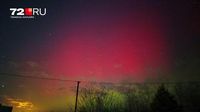On the night of March 23, 2025, a remarkable celestial spectacle unfolded as residents of Perm reported several unusual lights gliding through the sky in a line. This occurrence sparked curiosity and speculation among locals, some of whom took to social media to share their observations. One Permian resident, Julia, reported seeing eight lights flying over her home in the Zakamensk area. She described the scene by saying, "They appeared while I was away, but as soon as I stepped outside, they vanished. Moments later, other lights reappeared, shaped like the letter 'g' in orange, and disappeared within a few minutes." These strange flights, with their ethereal hues, led observers to ponder their origin.
To delve deeper, we consulted astronomer Sergei Polishchuk, who addressed the myriad questions arising from this phenomenon. Polishchuk suggested that these lights could very well be a grouping of Starlink satellites launched by Elon Musk's SpaceX, intended to provide high-speed internet. “However, I find it troubling that in the video, they don’t seem to be moving,” he added, indicating the possibility of differing celestial events. He remarked, “If they were moving, they would be satellites; even geostationary satellites have specific trajectories.” This insight left many now contemplating whether they had witnessed multiple phenomena rather than a singular event.
Adding to the intrigue, the same night, the Tyumen region witnessed another extraordinary event—the Northern Lights. The skies blazed with vivid green and pink hues, an extraordinary display attributed to a strong magnetic storm caused by recent solar activities. According to amateur astronomer Vitaly Ugreninov, “On March 21, strong bursts of solar plasma had triggered the aurora borealis that night.” He also informed that geomagnetic disturbances were ongoing and that further opportunities to see the lights were expected that evening, noting, “The strongest storms are anticipated between 03:00 and 15:00 Moscow time.” This phenomenon mesmerized many, with residents of the Tyumen region sharing photographs on social media to showcase the otherworldly spectacle.
This recent uptick in sightings of the Northern Lights in regions like Tyumen has raised eyebrows and sparked discussions among meteorologists and climatologists. Ilya Eza, a senior researcher at the International Center for Cryology and Cryospheric Research at Tyumen State University, highlighted that such occurrences are becoming less rare due to ongoing environmental changes. “The frequency of such phenomena serves as a clear sign of ecological issues at play,” he noted.
As the news spread of these simultaneous celestial happenings, many took a moment to reflect on their significance. Residents from Perm, as well as Tyumen, were united in their awe, albeit from vastly differing perspectives. Each region, in its own right, celebrated the unexpected beauty carved out by natural forces, leaving them with not just questions, but also a deep appreciation for the wonders of the night sky.
Similar displays of lights were seen in the Perm region previously, notably on June 6, 2024, illustrating an odd pattern of recurring interest amidst local communities regarding the skies above them. These sightings have elicited conversations around the urban legend of unidentified flying objects, but notably, many residents seem more inclined to consider astronomical explanations instead.
The alignment of these two natural wonders on the same night—a celestial light show over Perm and the Northern Lights observed in Tyumen—has undoubtedly reinforced public interest in astronomy and natural phenomena as a whole. The response from those witnessing these sights seems to transcend the unfounded myth of extraterrestrial observers, transitioning communities towards an appreciation for both science and the environment.
While some remained skeptical about the explanations posited by experts, others found beauty and community in the shared experience of astronomical observations. Whether as a humble spectacle or a sign of larger ecologic issues, these celestial events connect communities while inspiring curiosity about our universe.
As society grapples with the implications of climate change, the beauty of these natural phenomena remains crucial reminders of what is at stake. Observers from both regions are left with the same sentiments—wonder, curiosity, and a predominant desire to understand more about the intricate dances of nature, reaffirming our human connection to the cosmos.





